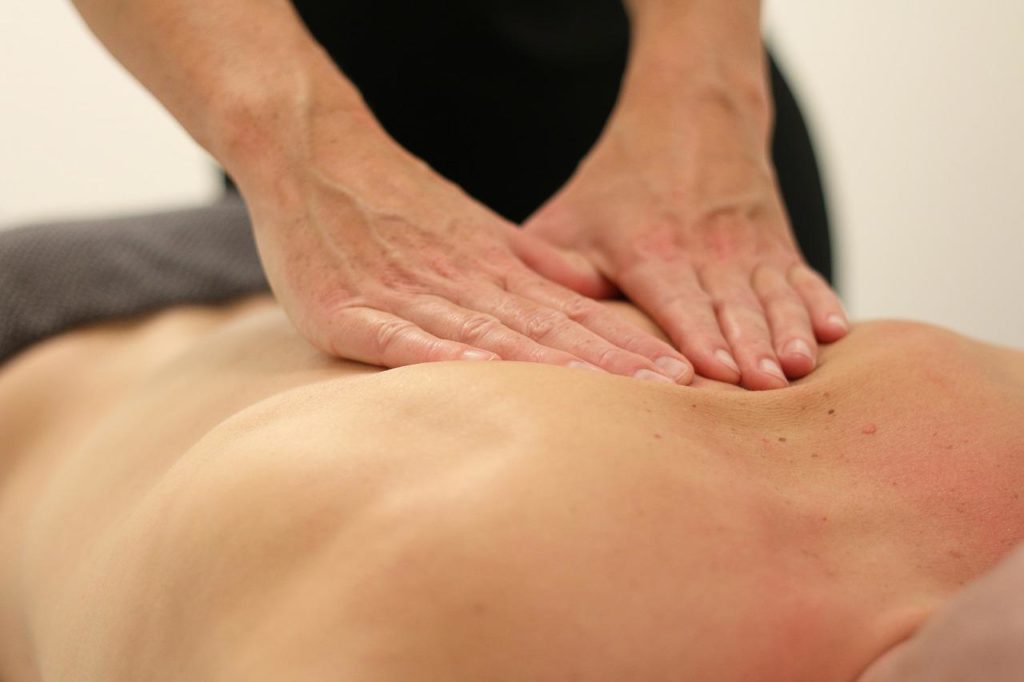The benefits of massage therapy extend far beyond mere relaxation, making it a crucial component of wellness. As a significant enhancer of physical health, especially for those committed to fitness routines, massage therapy plays a vital role in improving muscle recovery and growth, correcting muscle imbalances, and reducing stress. Understanding the profound impact of these benefits underscores why incorporating massage therapy into your workout plan is essential for achieving and maintaining optimal health.
Massage Therapy and Workout Recovery
One of the most immediate benefits of massage therapy is its ability to aid in workout recovery. It has been shown that even a brief 10-minute Swedish massage post-exercise can significantly improve recovery of muscle function. This improvement is not attributed to the common myth that massage helps remove lactic acid—a byproduct of muscle exertion that clears out naturally within about an hour after a workout. Instead, according to the results of recent studies, the benefits arise from massage’s ability to reduce inflammation and stimulate the production of proteins that generate energy and regulate metabolism.
When you exercise, particularly during intense sessions, your muscles undergo stress that leads to microscopic damage. This damage triggers inflammation, a natural response that helps the body repair itself. However, excessive inflammation can prolong soreness and delay recovery. Massage therapy mitigates this by promoting blood circulation, which helps reduce inflammation more rapidly and effectively. Additionally, enhanced blood flow delivers essential nutrients and oxygen to the muscles, accelerating the healing process and allowing for quicker returns to training.
Correcting Muscle Imbalances and Preventing Injury
Modern lifestyles often contribute to muscle imbalances, which can lead to injuries if left unaddressed. Consider these common scenarios:
- Performing the same workout routines repetitively.
- Sitting for extended periods.
- Maintaining poor posture.
- Frequently wearing high heels.
These habits can cause certain muscles to become overly tight while others weaken from underuse, leading to muscle imbalance. Typically, muscle imbalances occur around key joints such as the hips, shoulders, and knees. When stronger muscles compensate for weaker ones, it results in misalignment, reduced mobility, and an increased risk of injuries like tendonitis.
Therapeutic massage by targeting and stretching the tight muscles can help improve flexibility and range of motion as shown in a recent review study on the effects of massage therapy on exercise performance. As the tight muscles loosen and blood flow increases, the delivery of oxygen and nutrients is enhanced, kickstarting the healing and strengthening of weaker muscles. Over time, this could help realign the body, prevent injuries, and improve overall physical function.
Decreasing Stress
Massage therapy is widely recognized for its ability to reduce stress, making it a favorite for many seeking relaxation and mental well-being. The physical and emotional relaxation provided by massage can significantly lower cortisol levels and increase serotonin and dopamine. Cortisol, the body’s primary stress hormone, can have numerous negative effects when chronically elevated, including promoting overeating and weight gain. Various types of massage, from gentle Swedish massages to more intense deep tissue or sports massages, can effectively reduce cortisol levels. This reduction is crucial for mental health as high cortisol levels are linked to anxiety, depression, and sleep disturbances. By lowering cortisol, massage therapy creates a cascade of positive effects: increasing levels of serotonin and dopamine—neurotransmitters responsible for feelings of happiness, calm, and motivation.
Enhanced levels of these “feel-good” chemicals do more than just improve mood; they also contribute to better sleep quality. Adequate sleep is essential for overall health, facilitating the body’s natural healing and repair processes. Therefore, regular massage therapy not only provides immediate stress relief but also supports long-term mental and physical well-being.
How Massage Therapy Benefits My Fitness Routine
Given the extensive benefits of massage therapy, incorporating it into your regular workout plan can significantly enhance your fitness and health. Here are some practical tips for making massage therapy a consistent part of your lifestyle:
Schedule Regular Sessions
To reap the full benefits of massage therapy, consider scheduling regular sessions. Depending on your needs and lifestyle, this could be weekly, bi-weekly, or monthly. Consistency is key to maintaining improvements in muscle balance, stress levels, and recovery rates.
Choose the Right Type of Massage
Different types of massage cater to different needs. Swedish massages are excellent for relaxation and general stress relief. Deep tissue massages target deeper layers of muscle and are ideal for addressing chronic pain and muscle imbalances. Sports massages focus on areas of the body that are overused and stressed from repetitive and often aggressive movements. Understanding your specific needs will help you choose the most appropriate type of massage.
Stay Hydrated and Nourished
Proper hydration and nutrition play a critical role in the effectiveness of massage therapy. Water helps flush out toxins released during a massage, while a balanced diet provides the necessary nutrients for muscle repair and overall health. Ensure you drink plenty of water before and after your sessions and maintain a diet rich in vitamins and minerals.
Communicate with Your Therapist
Effective communication with your massage therapist is crucial for maximizing the benefits of each session. Share your goals, any areas of discomfort, and feedback on pressure levels. This information allows the therapist to tailor the massage to your specific needs, ensuring you receive the most effective treatment.
The Broader Impact of Massage Therapy
Beyond individual health benefits, massage therapy can have broader impacts on overall wellness. For instance, workplace wellness programs that include massage therapy have been shown to reduce stress and increase productivity among employees. Similarly, massage therapy in clinical settings can enhance patient care by alleviating pain, reducing anxiety, and promoting faster recovery from surgeries or chronic conditions.
Moreover, massage therapy contributes to a holistic approach to health, emphasizing the interconnectedness of physical, mental, and emotional well-being. It encourages a proactive stance on health management, highlighting the importance of regular self-care and preventive measures.
Conclusion
At Pledge To Fitness in Bellaire, Houston, TX, we understand that massage therapy is not just a luxury, but a fundamental aspect of holistic well-being. Our studio, dedicated to providing personalized fitness solutions, emphasizes the importance of massage therapy in enhancing both physical and mental health. Through targeted techniques aimed at aiding workout recovery, addressing muscle imbalances, and reducing stress, our massage therapy services complement your fitness journey. Whether you’re an athlete focused on optimal recovery, someone managing chronic stress, or simply aiming to elevate your quality of life, integrating regular massage sessions into your wellness routine at Pledge To Fitness can lead to remarkable improvements in your overall health and vitality.



